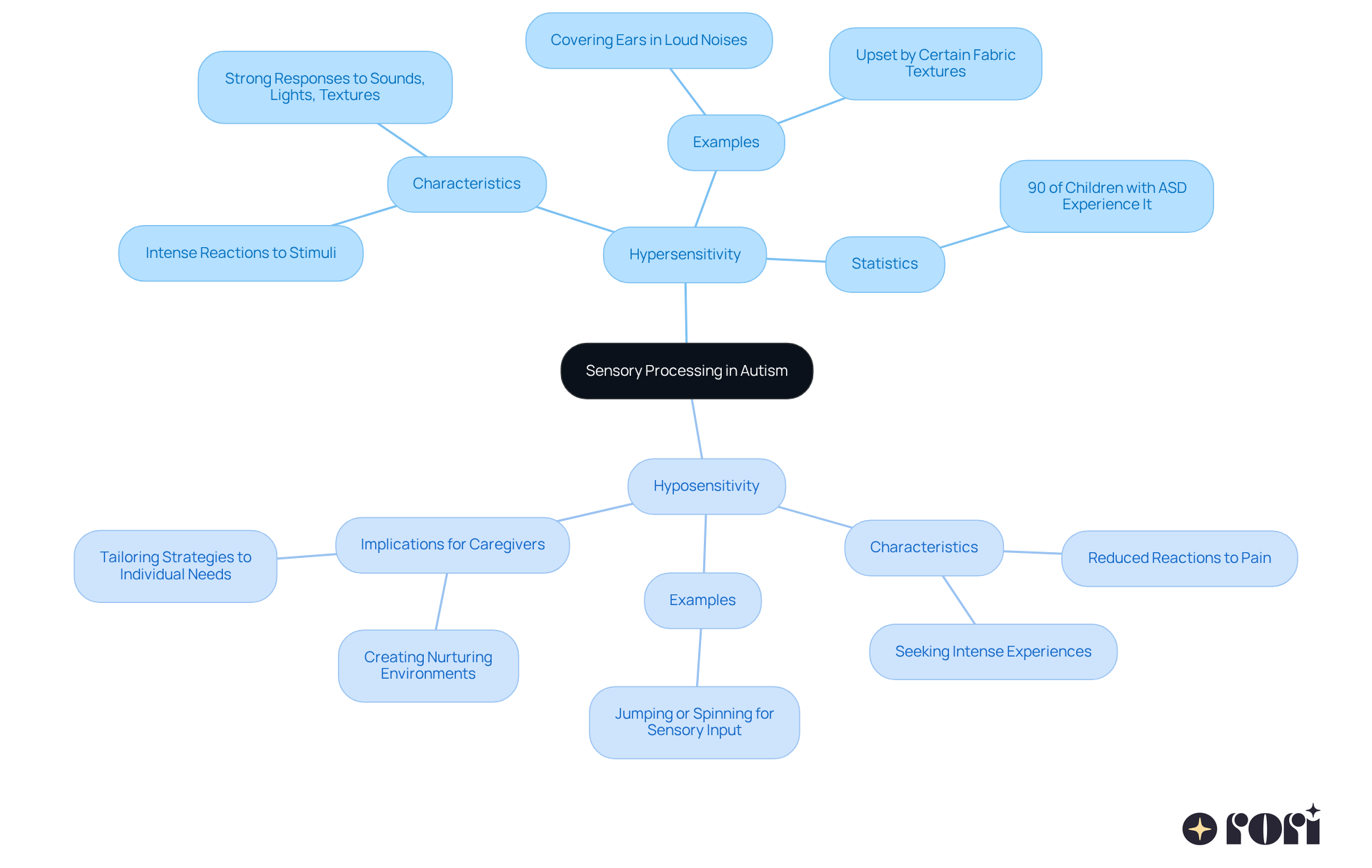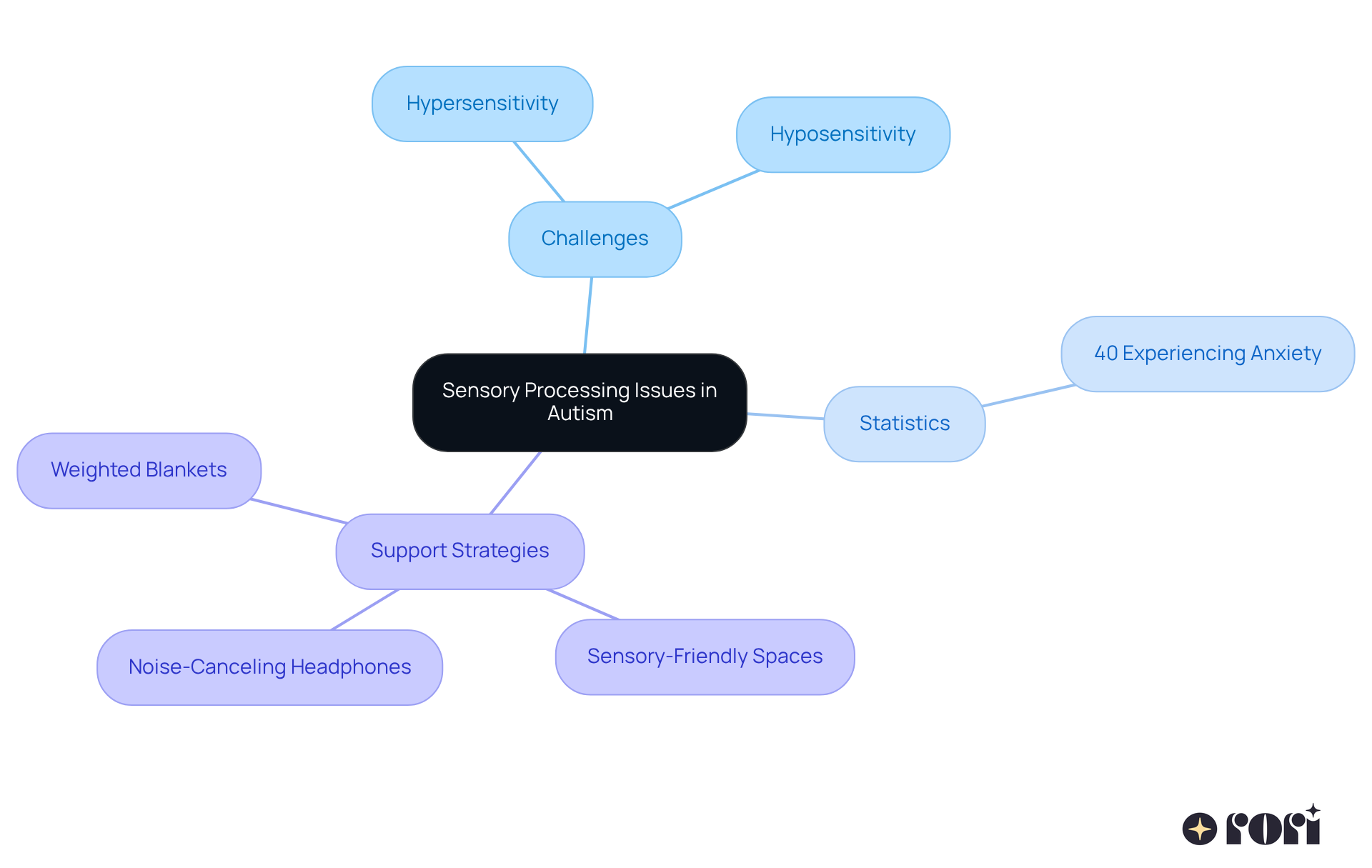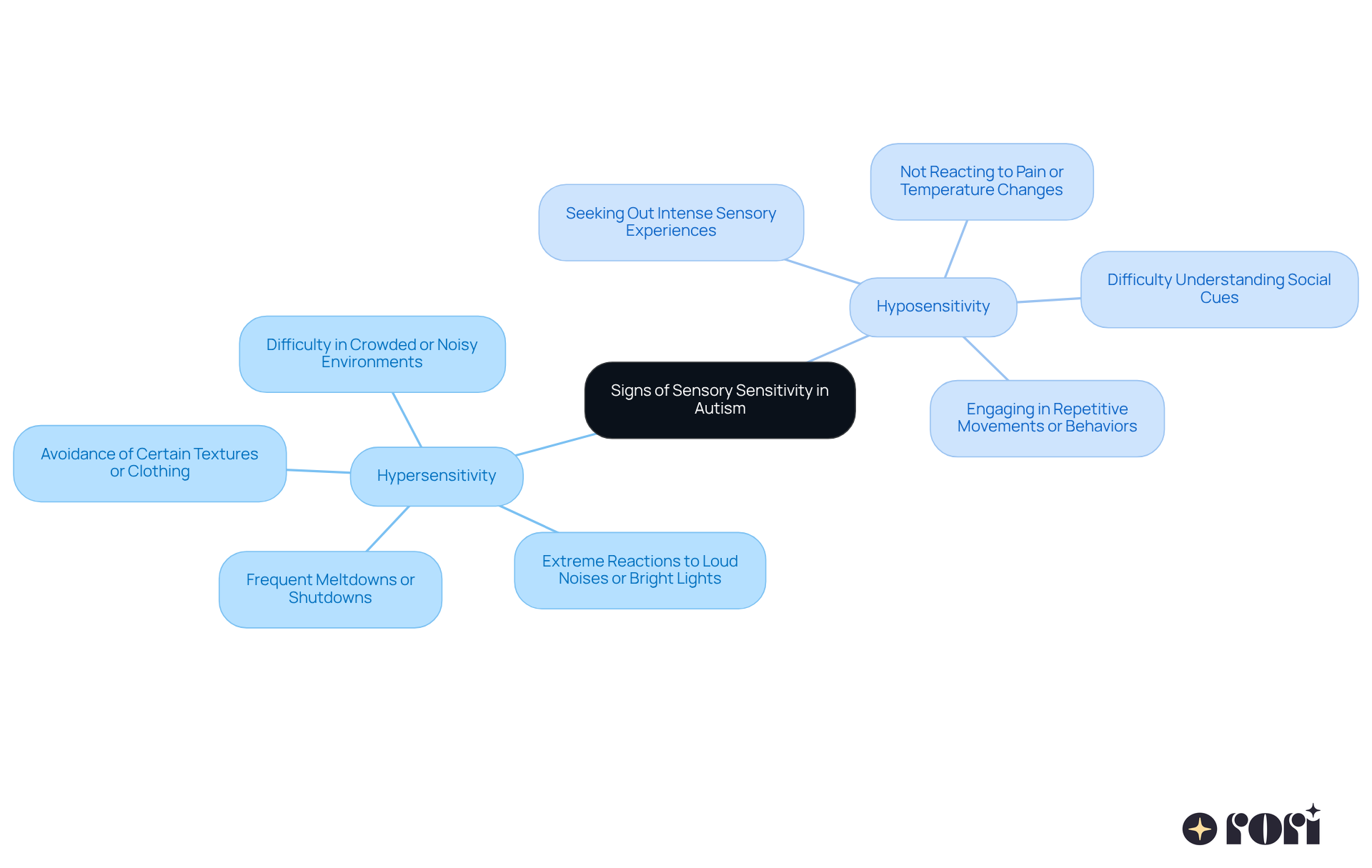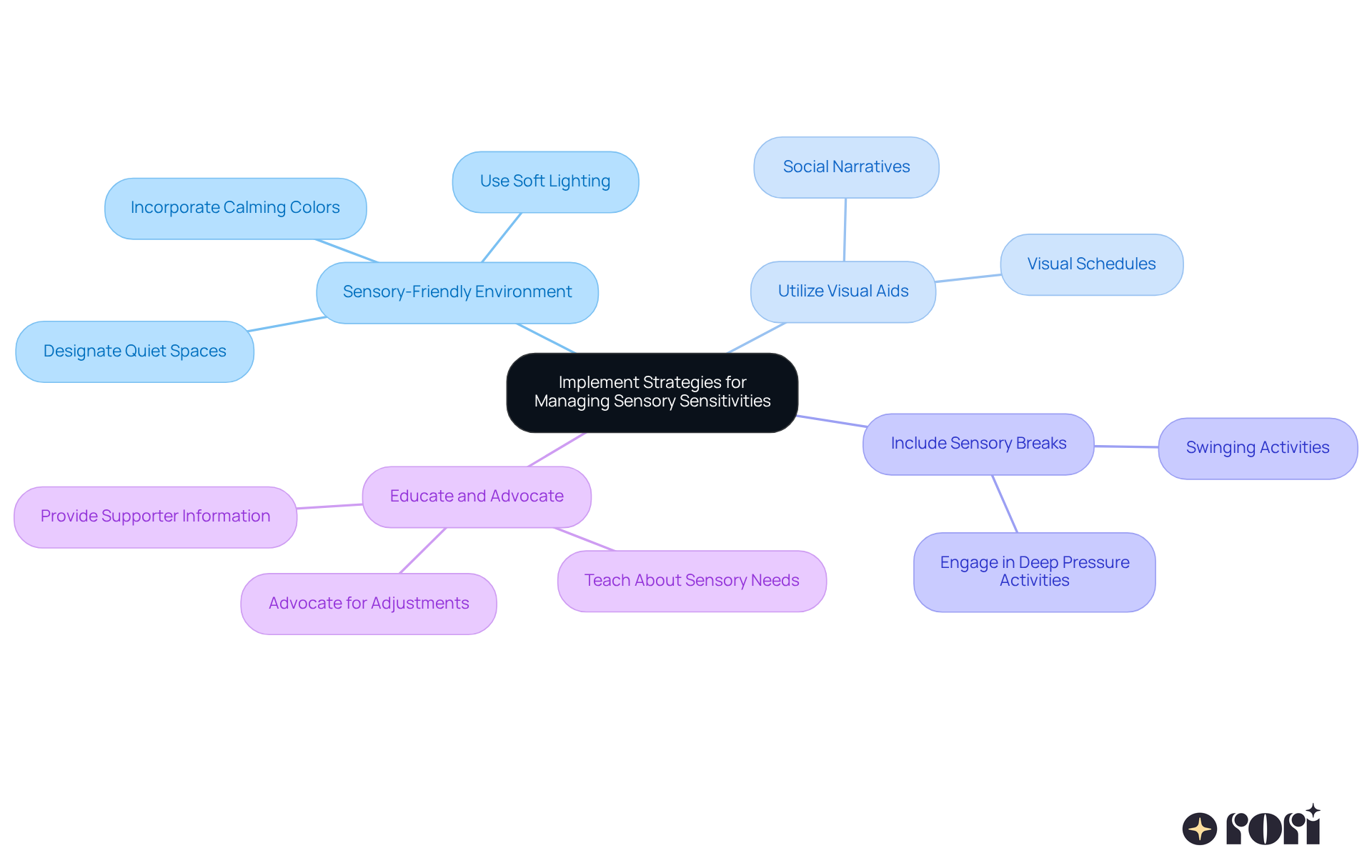Hypersensitivity and hyposensitivity in autism are fascinating aspects of how children process sensory information. Hypersensitivity means some kids have intense reactions to certain stimuli, while hyposensitivity involves a reduced response or a desire for more intense sensory experiences.
Recognizing these sensory needs is so important for caregivers! Understanding what these children experience can lead to better strategies for creating supportive environments. This can really enhance their comfort and engagement in everyday situations.
Let’s explore this together! By acknowledging these unique sensory profiles, we can help our children thrive. Remember, you’re not alone in this journey, and there are resources available to guide you.
Understanding sensory processing in autism is so important, as it shapes how many children experience the world around them. For many kids, hypersensitivity and hyposensitivity present two very different sensory challenges that can really impact their daily lives and emotional health. Did you know that over 90% of children on the autism spectrum encounter these issues? This brings up a crucial question: how can caregivers best support these children as they navigate their unique sensory environments?
Exploring the nuances of these conditions not only highlights their effects but also uncovers practical strategies to create a more comfortable and engaging space for young individuals with autism. Let’s dive into this together and discover ways to make their experiences more enjoyable!
Hypersensitivity and hyposensitivity autism are important processing issues that many young people with autism experience. Hypersensitivity shows up as an intense reaction to stimuli, leading to strong responses to sounds, lights, textures, or other inputs that others might handle more easily. For example, a child might cover their ears when faced with loud noises or become visibly upset by certain fabric textures against their skin. Research indicates that over 90% of children with autism spectrum disorder (ASD) experience hypersensitivity and hyposensitivity autism, underscoring its significance in their daily lives.
On the flip side, hypersensitivity and hyposensitivity autism are characterized by a reduced reaction to stimuli. Kids who show hyposensitivity might not react to pain or may actively seek out intense experiences, like spinning or jumping, to feel more connected to their surroundings. This contrast in how children process sensory information emphasizes the importance of understanding each child’s unique profile. By recognizing these traits, parents and educators can create nurturing environments tailored to the specific sensory needs of children, ultimately enhancing their comfort and engagement in various settings.
At Rori Care, our dedicated clinical leadership team is passionate about empowering caregivers with ABA principles and strategies. We strive to ensure that every child achieves their behavioral goals through active involvement and data collection. This patient-focused and adaptable approach is essential for improving learning, communication, and social skills in children with autism, as it effectively addresses the processing challenges they face. Let’s explore this journey together—we’re here to help you every step of the way!

Sensory processing difficulties in autism can significantly affect a young person's ability to connect with their surroundings and engage socially. Imagine trying to focus in a noisy room or being overwhelmed by bright lights—these are common challenges faced by many children on the spectrum. Did you know that about 40% of youngsters with autism also experience anxiety? This can be linked to their processing difficulties, making social interactions even more complex.
For children who experience hypersensitivity and hyposensitivity autism, busy environments can be overwhelming, often resulting in meltdowns or social withdrawal. On the flip side, individuals affected by hypersensitivity and hyposensitivity autism might engage in risky behaviors, like climbing high structures or showing less reaction to physical pain. As psychologist Leo Kanner highlighted, understanding these perception issues is crucial for effective intervention.
So, how can we support our youngsters facing these processing challenges? There are several practical approaches that guardians can implement:
These strategies can help regulate sensory input. Plus, Rori Care offers group and individual therapy sessions that equip caregivers with essential knowledge of ABA principles and strategies. This not only complements professional interventions but also fosters consistency in the young person’s environment, leading to better behavioral outcomes.
By recognizing the unique strengths and challenges of individuals with autism, parents and educators can tailor interventions that promote comfort and engagement. This, in turn, enhances the child's learning and social experiences. The acknowledgment of autism as a special education category in 1991 has opened doors for more specialized support, emphasizing the importance of understanding these processing challenges.
Let’s explore this together! By connecting with resources and support, we can make a meaningful difference in the lives of our children.

Identifying the indicators of hypersensitivity and hyposensitivity autism can really empower supporters to offer prompt assistance. This, in turn, enhances their ability to apply effective strategies aligned with ABA principles. So, what might these signs look like?
For hypersensitivity, you might notice:
On the flip side, hyposensitivity signs may include:
By recognizing these signs, caregivers can gain a deeper understanding of their child's sensory needs, allowing them to make informed decisions that truly support their development. This active involvement not only complements professional interventions but also fosters consistency, leading to improved behavioral outcomes. Plus, the knowledge gained through support provider education can really help alleviate stress and enhance family interactions. It’s all about feeling confident in your ability to assist your child!
The patient-focused approach of ABA therapy ensures that the techniques used are tailored to meet the unique needs of each young person. Let’s explore this together! We’re here to help you every step of the way!

To help children manage their sensory sensitivities, caregivers can implement several strategies:
Create a Sensory-Friendly Environment: Designate quiet spaces where your child can retreat when feeling overwhelmed. Soft lighting and calming colors can create a soothing atmosphere, reflecting the compassionate approach of Rori Care's ABA treatment.
Utilize Visual Aids: Visual schedules and social narratives can assist young ones in understanding what to expect in various settings. This minimizes anxiety associated with overwhelming stimuli and aligns with ABA principles by providing structure and predictability tailored to each child's needs.
Include Sensory Breaks: Plan regular breaks during the day to allow your child to engage in soothing activities, like deep pressure or swinging. These breaks help manage input and can be part of a customized therapy plan for individuals with hypersensitivity and hyposensitivity autism offered by Rori Care.
Educate and Advocate: Teach your child about their sensory-related needs and advocate for adjustments in educational or social environments to ensure they feel supported. Providing supporters with information and approaches is a fundamental aspect of Rori Care's mission.
By implementing these strategies, caregivers can help children with hypersensitivity and hyposensitivity autism navigate their sensory experiences more effectively. This promotes overall well-being and development through the comprehensive support offered by Rori Care. Let’s explore this together!

Understanding hypersensitivity and hyposensitivity in autism is so important for creating supportive environments that truly meet the unique sensory needs of children on the spectrum. These two contrasting sensory processing challenges significantly shape how individuals with autism experience their world, making it clear that we need tailored approaches in caregiving and education.
Throughout this article, we’ve shared some key insights about what hypersensitivity and hyposensitivity are, along with how they manifest in daily life. Recognizing the signs of these conditions is crucial, and we’ve also discussed practical strategies for managing sensory sensitivities. By creating sensory-friendly spaces, using visual aids, and incorporating regular sensory breaks, caregivers can really help children navigate their sensory experiences. This not only leads to better behavioral outcomes but also enhances overall well-being.
Ultimately, having a deeper understanding of sensory processing issues in autism is essential for empowering both caregivers and educators. By advocating for the specific needs of children with hypersensitivity and hyposensitivity, and weaving effective strategies into daily routines, we can cultivate a more inclusive and supportive atmosphere. This proactive approach enriches the lives of children with autism and fosters a greater sense of community and understanding among everyone involved.
Let’s explore this together! Remember, we’re here to help you every step of the way!
What is hypersensitivity in autism?
Hypersensitivity in autism refers to an intense reaction to stimuli, leading to strong responses to sounds, lights, textures, or other inputs that individuals with autism might find overwhelming. For instance, a child may cover their ears in response to loud noises or become upset by certain fabric textures.
What is hyposensitivity in autism?
Hyposensitivity in autism is characterized by a reduced reaction to stimuli. Children with hyposensitivity might not respond to pain or may actively seek out intense experiences, such as spinning or jumping, to feel more connected to their environment.
How common are hypersensitivity and hyposensitivity in children with autism?
Research indicates that over 90% of children with autism spectrum disorder (ASD) experience hypersensitivity and hyposensitivity, highlighting the significance of these sensory processing issues in their daily lives.
Why is it important to understand hypersensitivity and hyposensitivity in children with autism?
Understanding hypersensitivity and hyposensitivity is crucial for recognizing each child's unique sensory processing profile. This awareness allows parents and educators to create nurturing environments tailored to the specific sensory needs of children, enhancing their comfort and engagement in various settings.
How does Rori Care support children with autism facing sensory processing challenges?
Rori Care's clinical leadership team empowers caregivers with ABA principles and strategies to help children achieve their behavioral goals. Their patient-focused and adaptable approach aims to improve learning, communication, and social skills in children with autism by effectively addressing the sensory processing challenges they encounter.